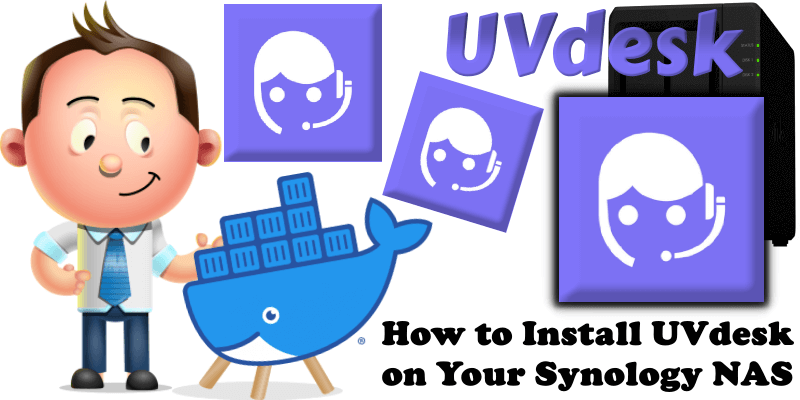
UVdesk offers a cloud-based and open source helpdesk solution that helps businesses in the e-commerce industry manage interactions with their customers. UVdesk provides multi-channel support and third-party integrations, support ticket management, task and email management, customer follow-up tracking and more. In this step by step guide I will show you how to install UVdesk on your Synology NAS using Docker & Portainer.
STEP 1
Please Support My work by Making a Donation.
STEP 2
Install Portainer using my step by step guide. If you already have Portainer installed on your Synology NAS, skip this STEP. Attention: Make sure you have installed the latest Portainer version.
STEP 3
Go to File Station and open the docker folder. Inside the docker folder, create one new folder and name it uvdeskdb. Follow the instructions in the image below.
Note: Be careful to enter only lowercase, not uppercase letters.
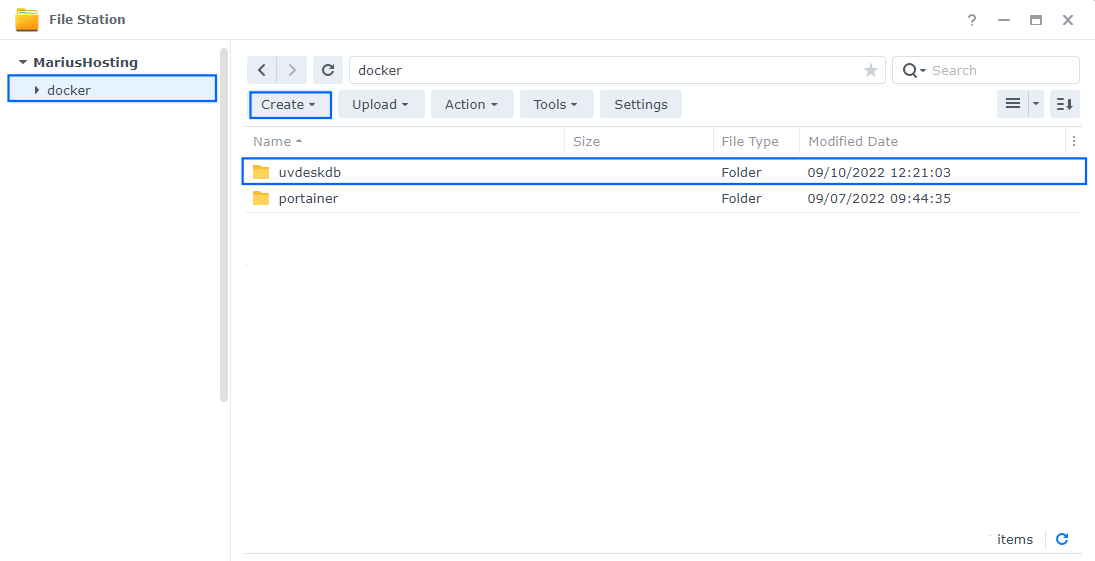
STEP 4
Log into Portainer using your username and password. On the left sidebar in Portainer, click on Home then Live connect. Follow the instructions in the image below.

On the left sidebar in Portainer, click on Stacks then + Add stack. Follow the instructions in the image below.

STEP 5
In the Name field type in uvdesk. Follow the instructions in the image below.
services:
db:
image: mysql:5.7
container_name: UVDESK_DB
hostname: uvdesk_db
volumes:
- /volume1/docker/uvdeskdb:/var/lib/mysql:rw
environment:
MYSQL_DATABASE: uvdesk
MYSQL_ROOT_PASSWORD: mariushosting
MYSQL_USER: uvdesk
MYSQL_PASSWORD: mariushosting
restart: on-failure:5
uvdesk:
image: nuttcorp/uvdesk:latest
container_name: UVDESK
healthcheck:
test: timeout 10s bash -c ':> /dev/tcp/127.0.0.1/80' || exit 1
interval: 10s
timeout: 5s
retries: 3
start_period: 90s
tty: true
environment:
MYSQL_USER: uvdesk
MYSQL_PASSWORD: mariushosting
MYSQL_ROOT_PASSWORD: mariushosting
MYSQL_DATABASE: uvdesk
ports:
- 6744:80
depends_on:
- db
restart: on-failure:5
Note: Before you paste the code above in the Web editor area, change the value for MYSQL_ROOT_PASSWORD and add your own password. mariushosting is an example for a password. You have to insert your own password.
Note: Before you paste the code above in the Web editor area, change the value for MYSQL_PASSWORD and add your own password. mariushosting is an example for a password. You have to insert your own password.
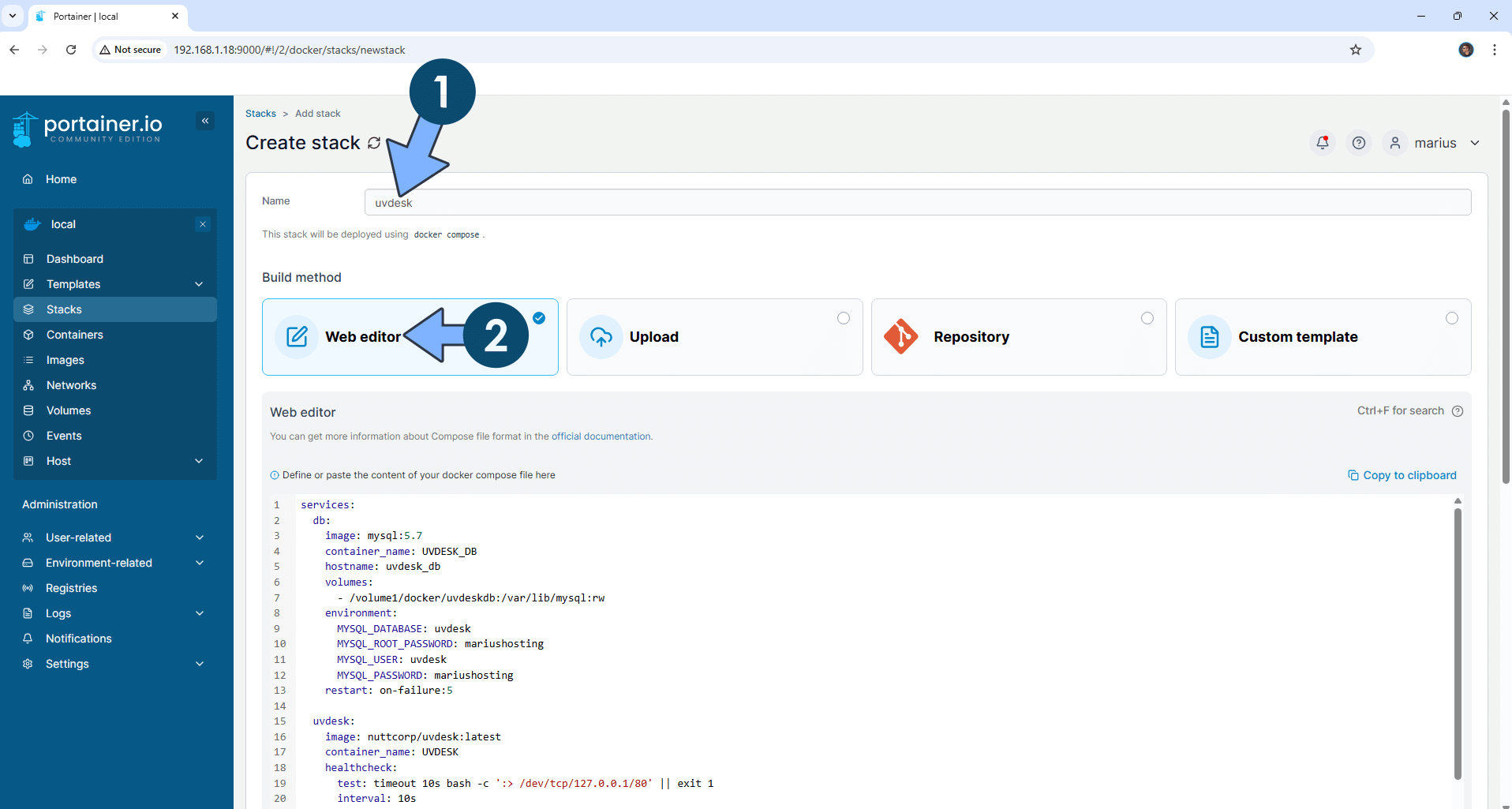
STEP 6
Scroll down on the page until you see a button named Deploy the stack. Click on it. Follow the instructions in the image below. The installation process can take up to a few minutes. It will depend on your Internet speed connection.
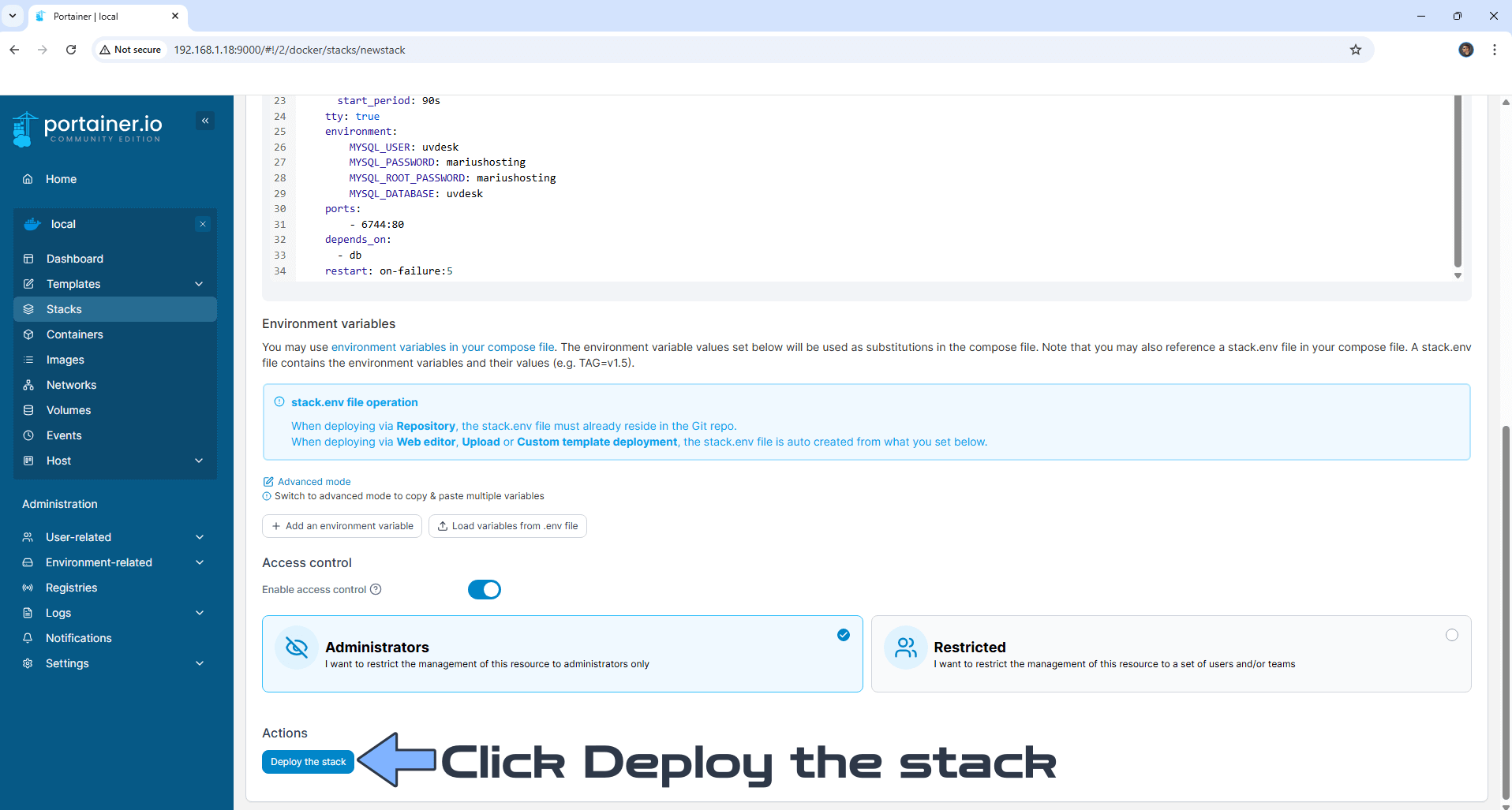
STEP 7
If everything goes right, you will see the following message at the top right of your screen: “Success Stack successfully deployed“.

STEP 8
🟢Please Support My work by Making a Donation. Almost 99,9% of the people that install something using my guides forget to support my work, or just ignore STEP 1. I’ve been very honest about this aspect of my work since the beginning: I don’t run any ADS, I don’t require subscriptions, paid or otherwise, I don’t collect IPs, emails, and I don’t have any referral links from Amazon or other merchants. I also don’t have any POP-UPs or COOKIES. I have repeatedly been told over the years how much I have contributed to the community. It’s something I love doing and have been honest about my passion since the beginning. But I also Need The Community to Support me Back to be able to continue doing this work.
STEP 9
Now open your browser and type in http://Synology-ip-address:6744 Click the LET’S BEGIN button – Follow the instructions in the image below.
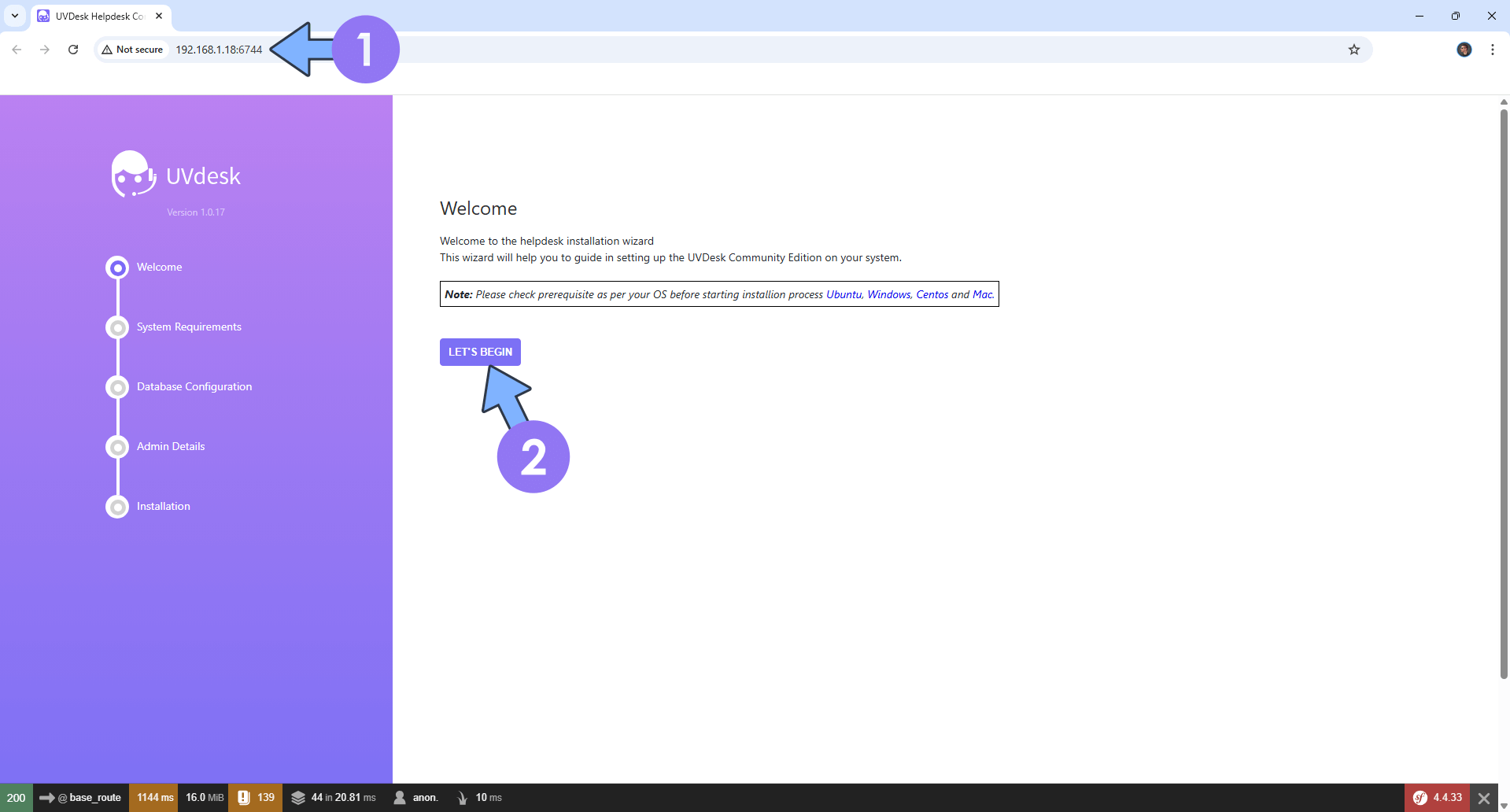
STEP 10
Click the PROCEED button. Follow the instructions in the image below.
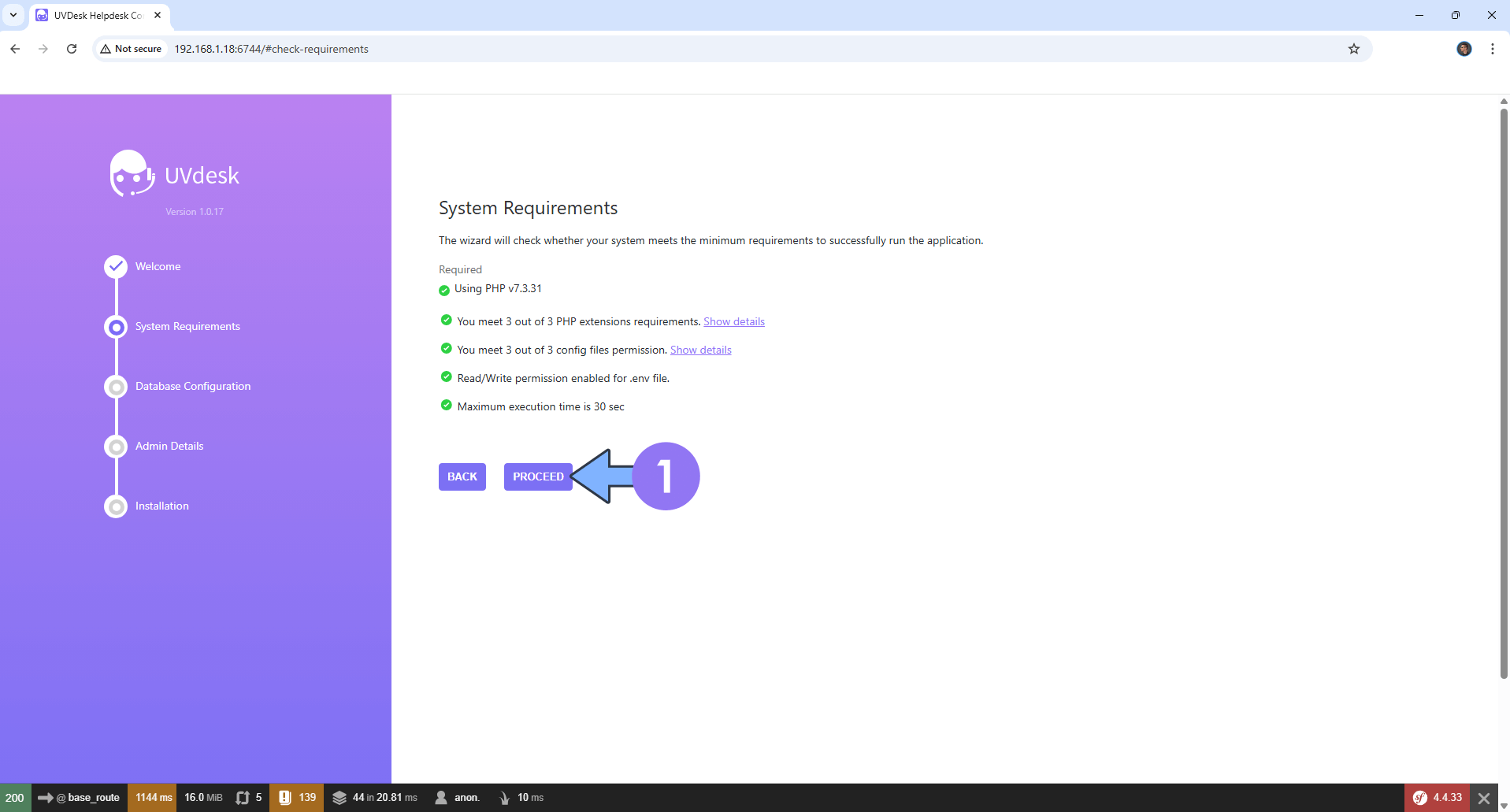
STEP 11
After you click the PROCEED button at STEP 10, add the following data:
- On the Server field type in: uvdesk_db
- On the Port field type in: 3306
- On the Username field type in: uvdesk
- On the Password field type in: Your own password that you have previously added at STEP 5.
- On the Database field type in: uvdesk
- Click PROCEED.
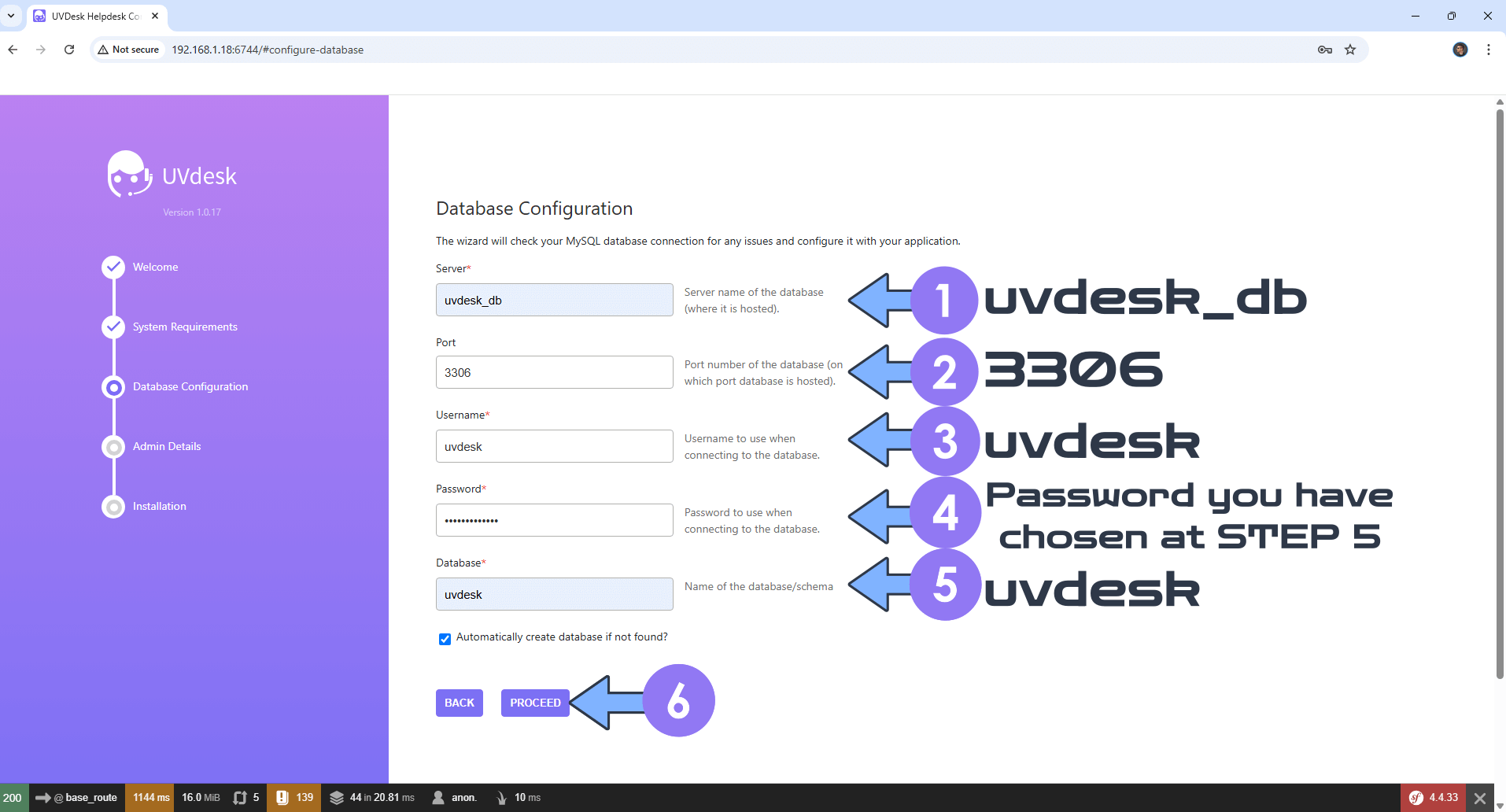
STEP 12
Create your Super Admin Account. Type in your Name, Email and Password. Click PROCEED. Follow the instructions in the image below.
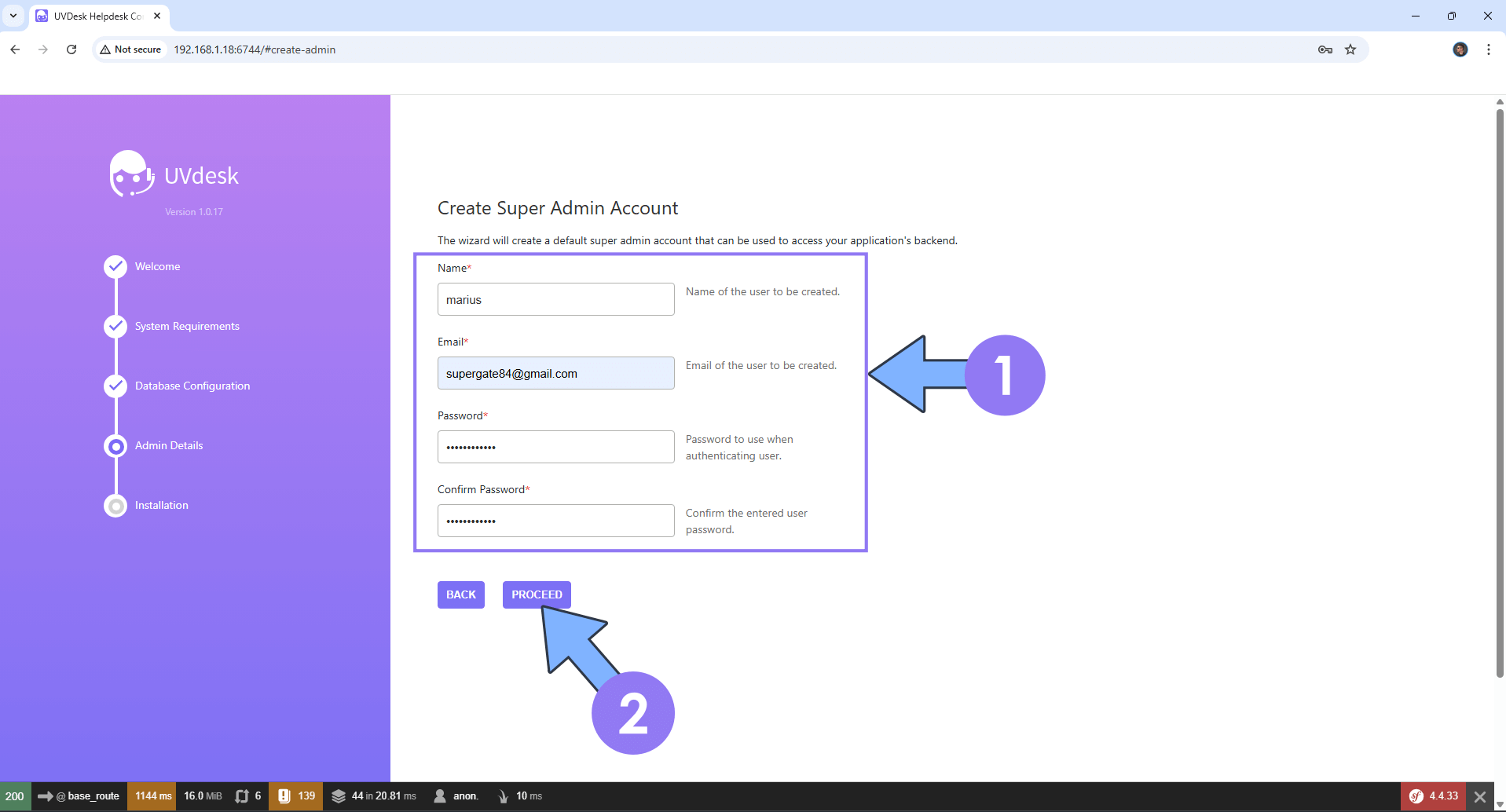
STEP 13
Click the PROCEED button. Follow the instructions in the image below.
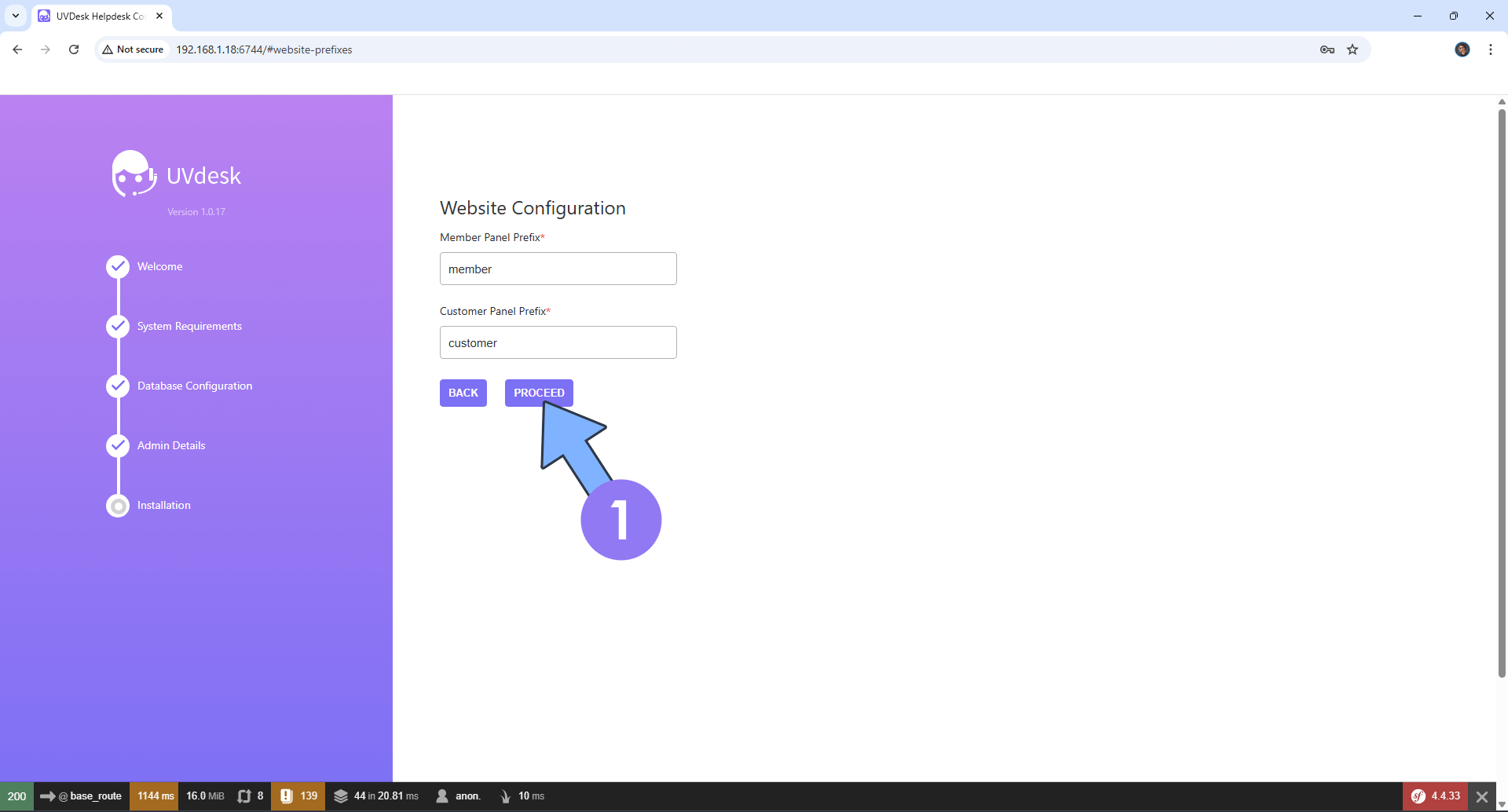
STEP 14
Click the INSTALL NOW button. Follow the instructions in the image below.
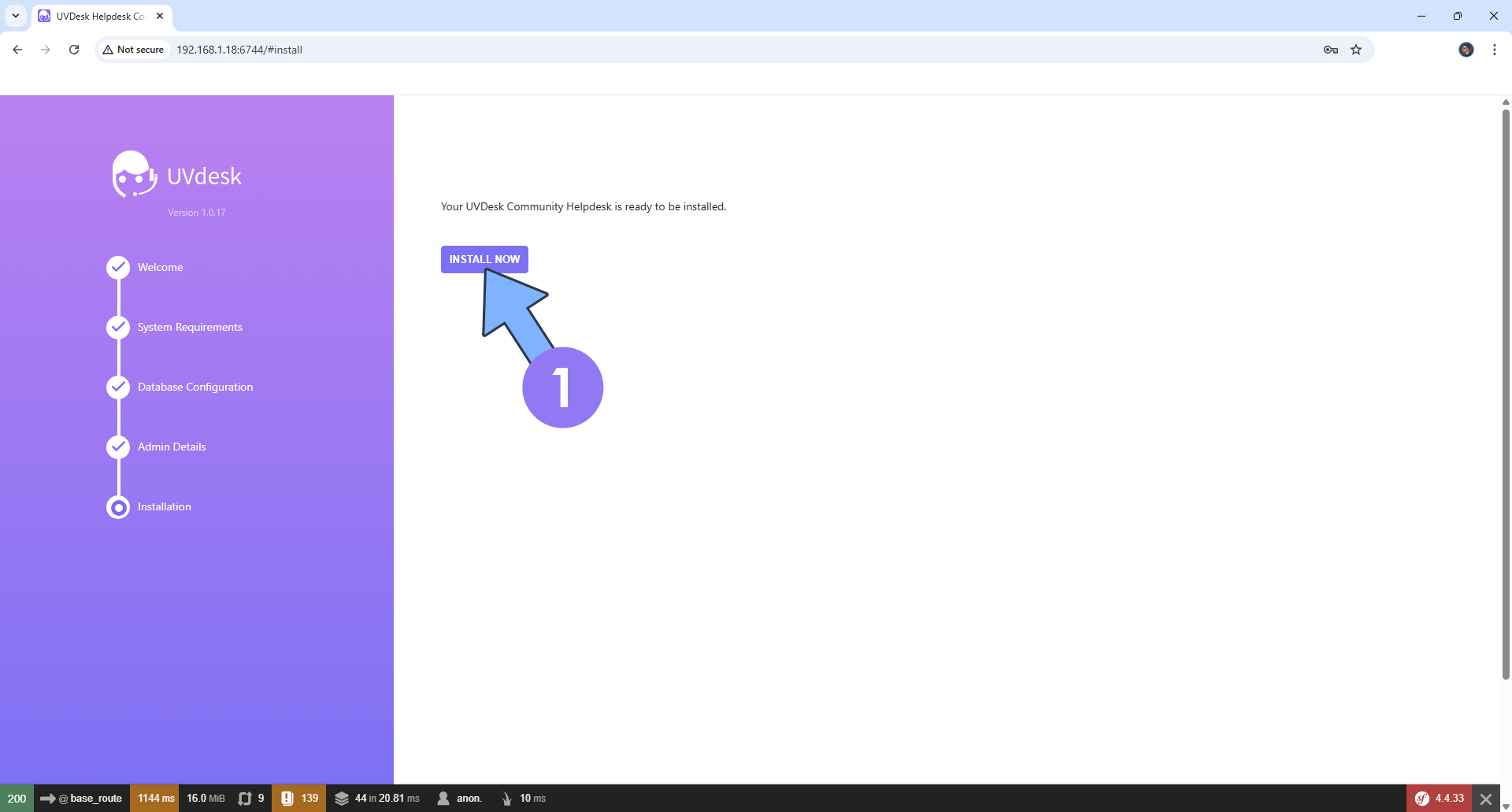
STEP 15
Wait a couple of minutes while your UVdesk is being installed. Follow the instructions in the image below.
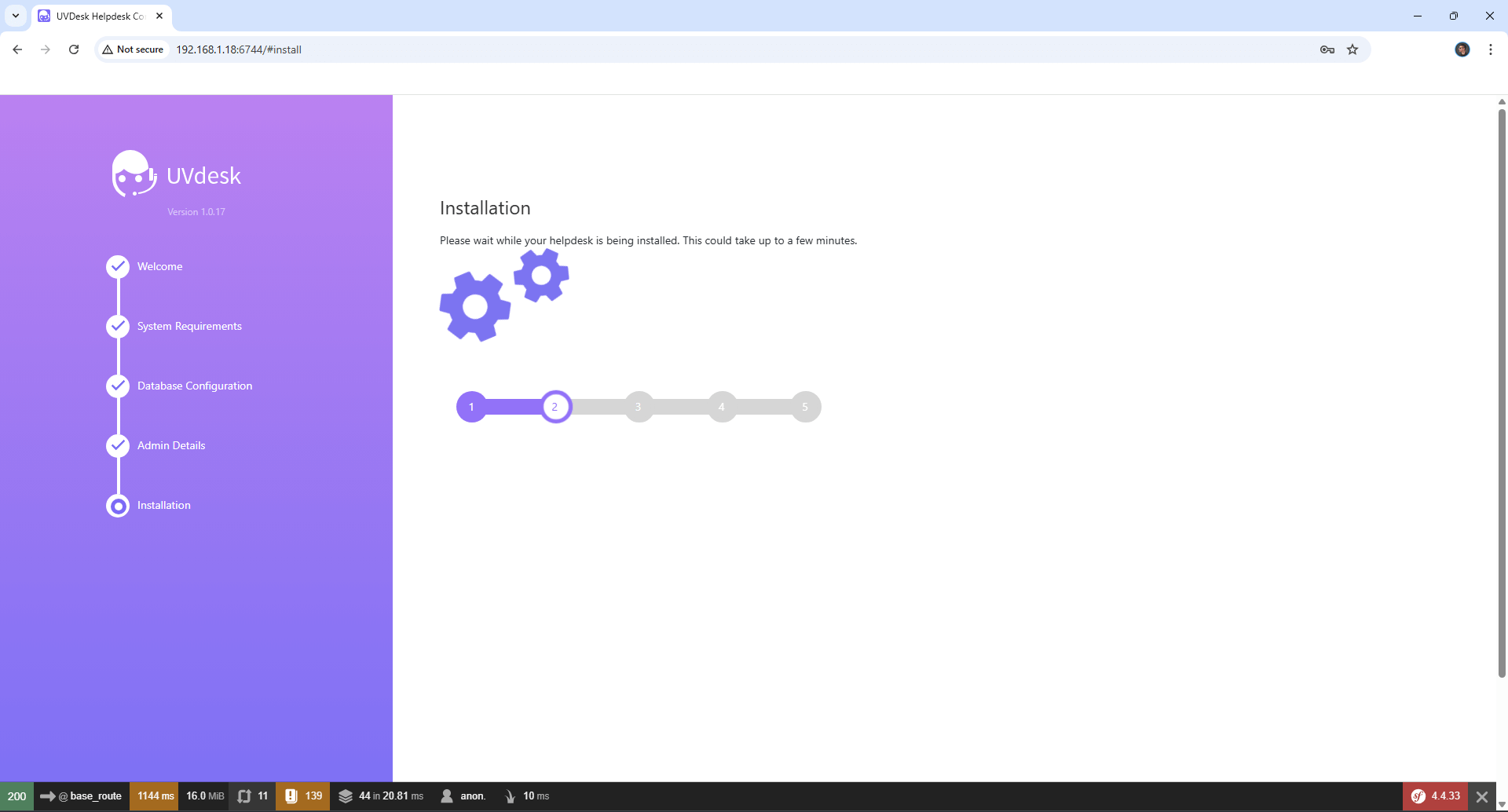
STEP 16
UVdesk is installed. Click the Admin Panel button. Follow the instructions in the image below.
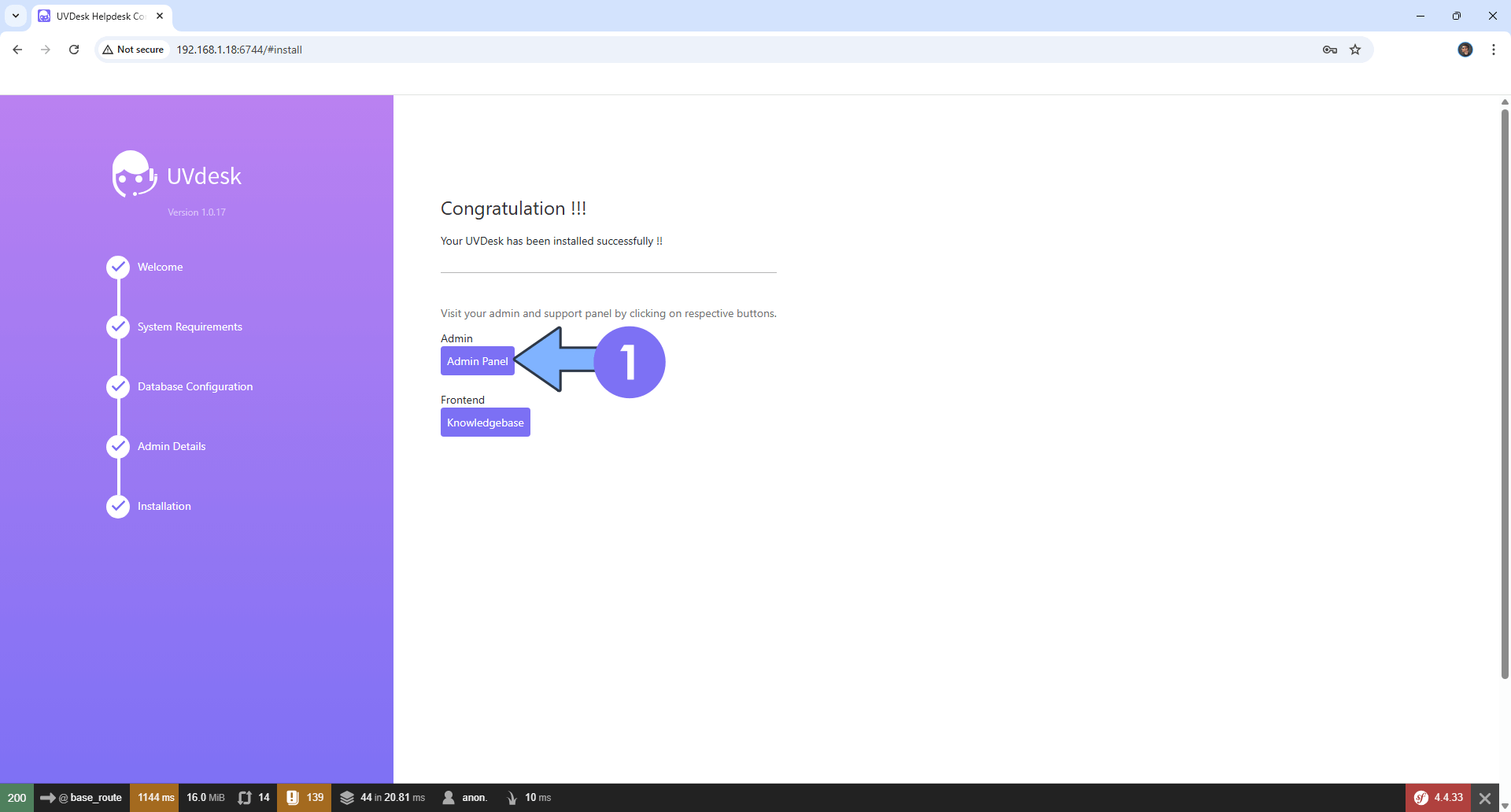
STEP 17
Add your own Email and Password that you have previously added at STEP 12. Click SIGN IN. Follow the instructions in the image below.
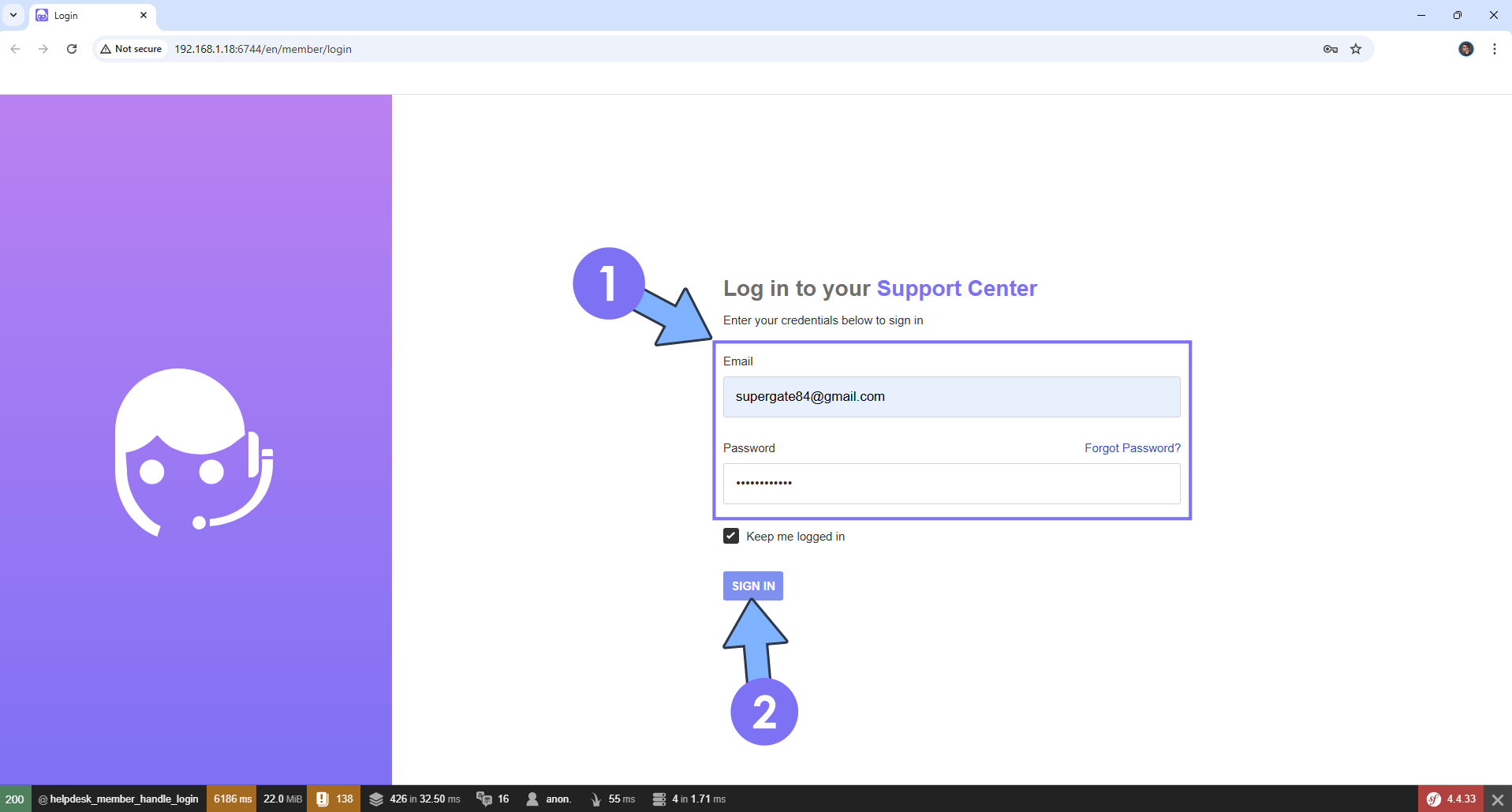
STEP 18
Your UVdesk dashboard at a glance!
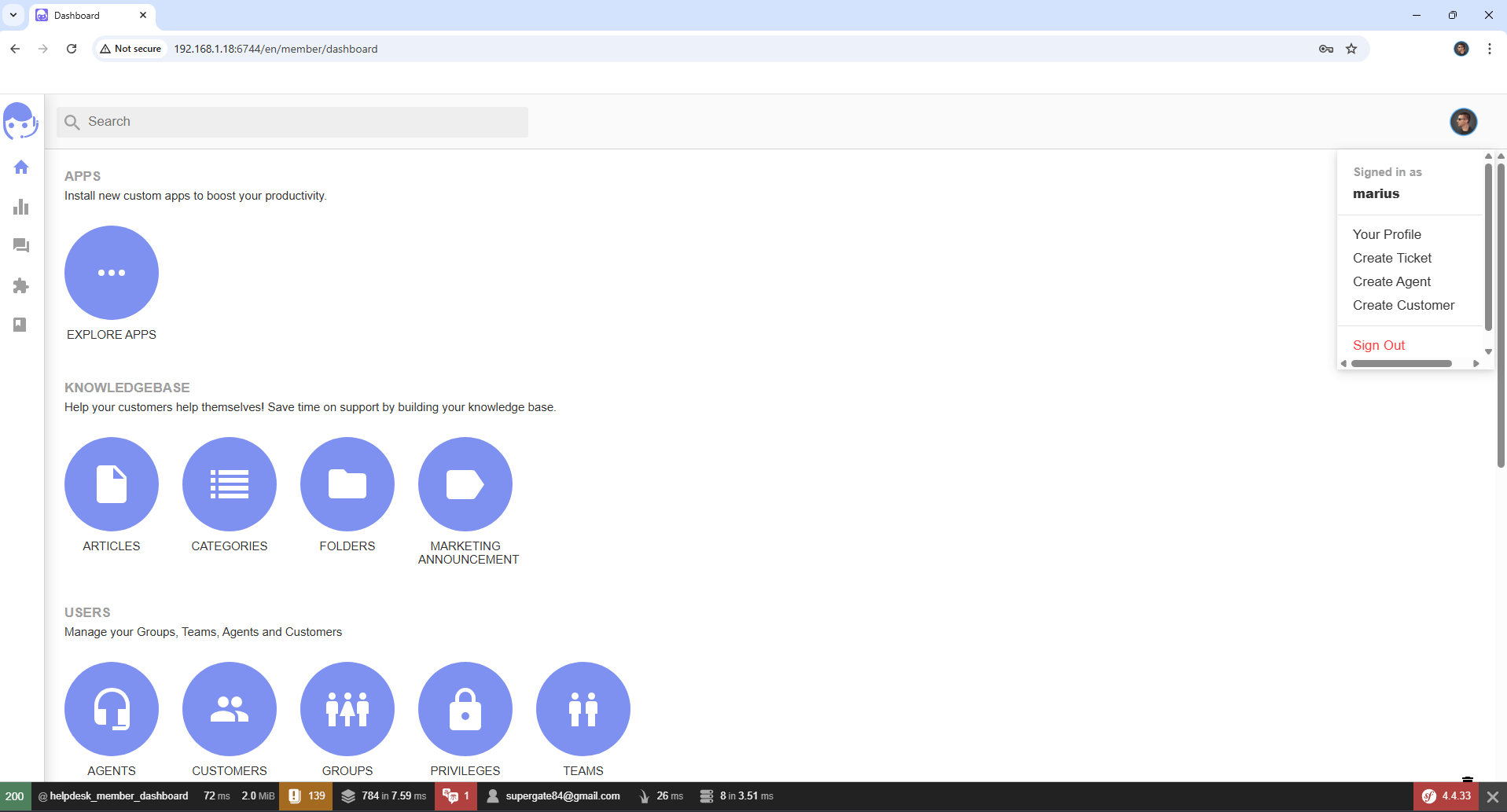
STEP 19
If you want to run the UVdesk container over HTTPS, check out my guide on How to Run Docker Containers Over HTTPS. In order to make UVdesk work via HTTPS, it’s mandatory to activate WebSocket.
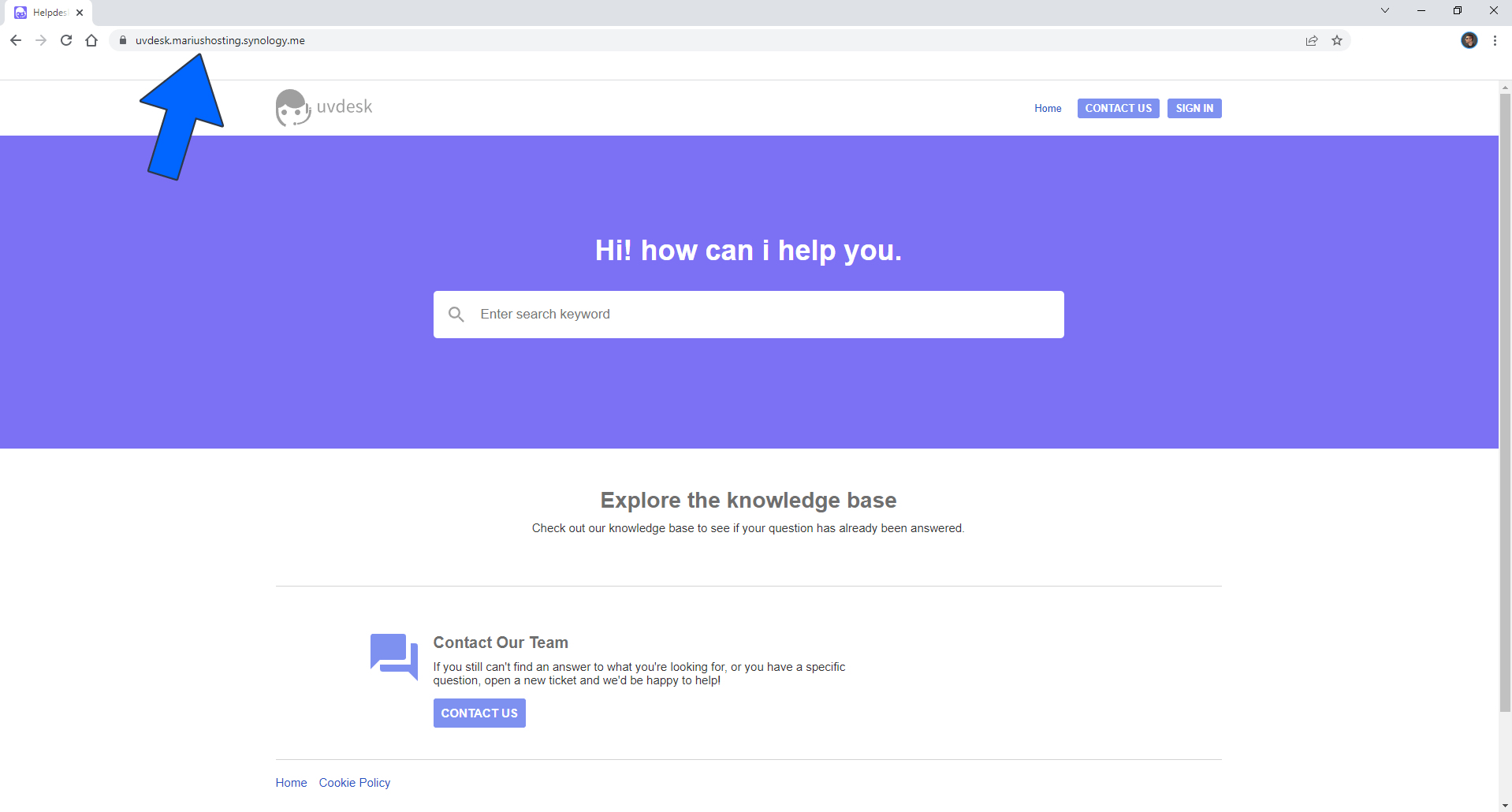
Enjoy UVdesk!
If you encounter issues by using this container, make sure to check out the Common Docker issues article.
Note: Find out how to update the UVdesk container with the latest image.
Note: How to Back Up Docker Containers on your Synology NAS.
Note: Can I run Docker on my Synology NAS? See the supported models.
Note: How to Free Disk Space on Your NAS if You Run Docker.
Note: How to Schedule Start & Stop For Docker Containers.
Note: How to Activate Email Notifications.
Note: How to Add Access Control Profile on Your NAS.
Note: How to Change Docker Containers Restart Policy.
Note: How to Use Docker Containers With VPN.
Note: Convert Docker Run Into Docker Compose.
Note: How to Clean Docker.
Note: How to Clean Docker Automatically.
Note: Best Practices When Using Docker and DDNS.
Note: Some Docker Containers Need WebSocket.
Note: Find out the Best NAS Models For Docker.
Note: Activate Gmail SMTP For Docker Containers.
This post was updated on Saturday / August 23rd, 2025 at 6:46 PM
